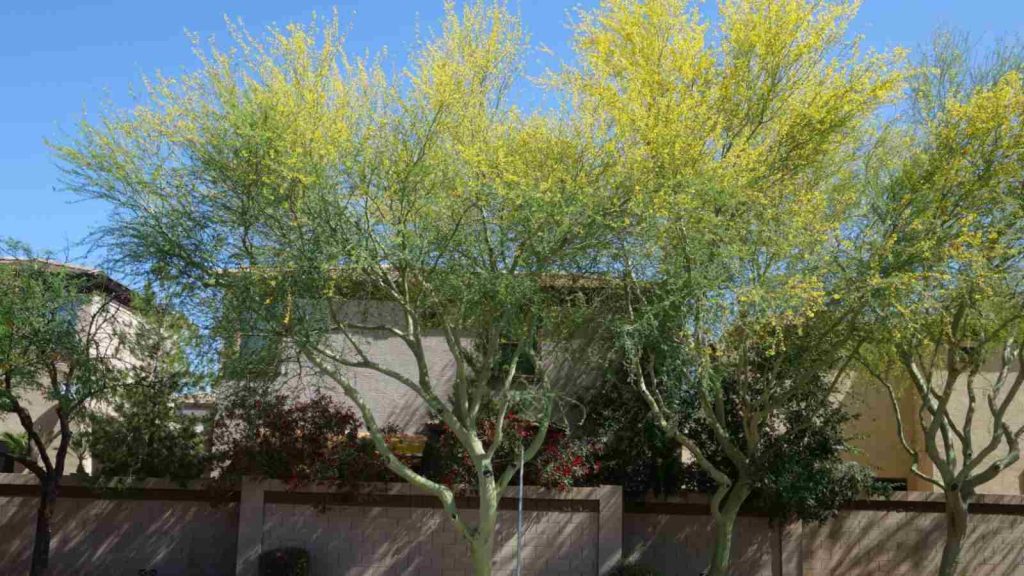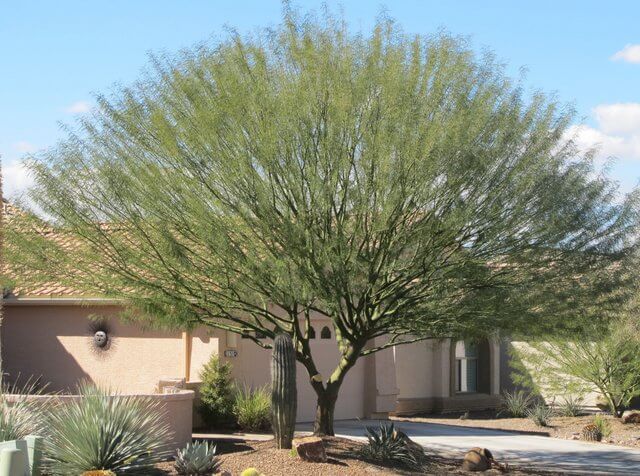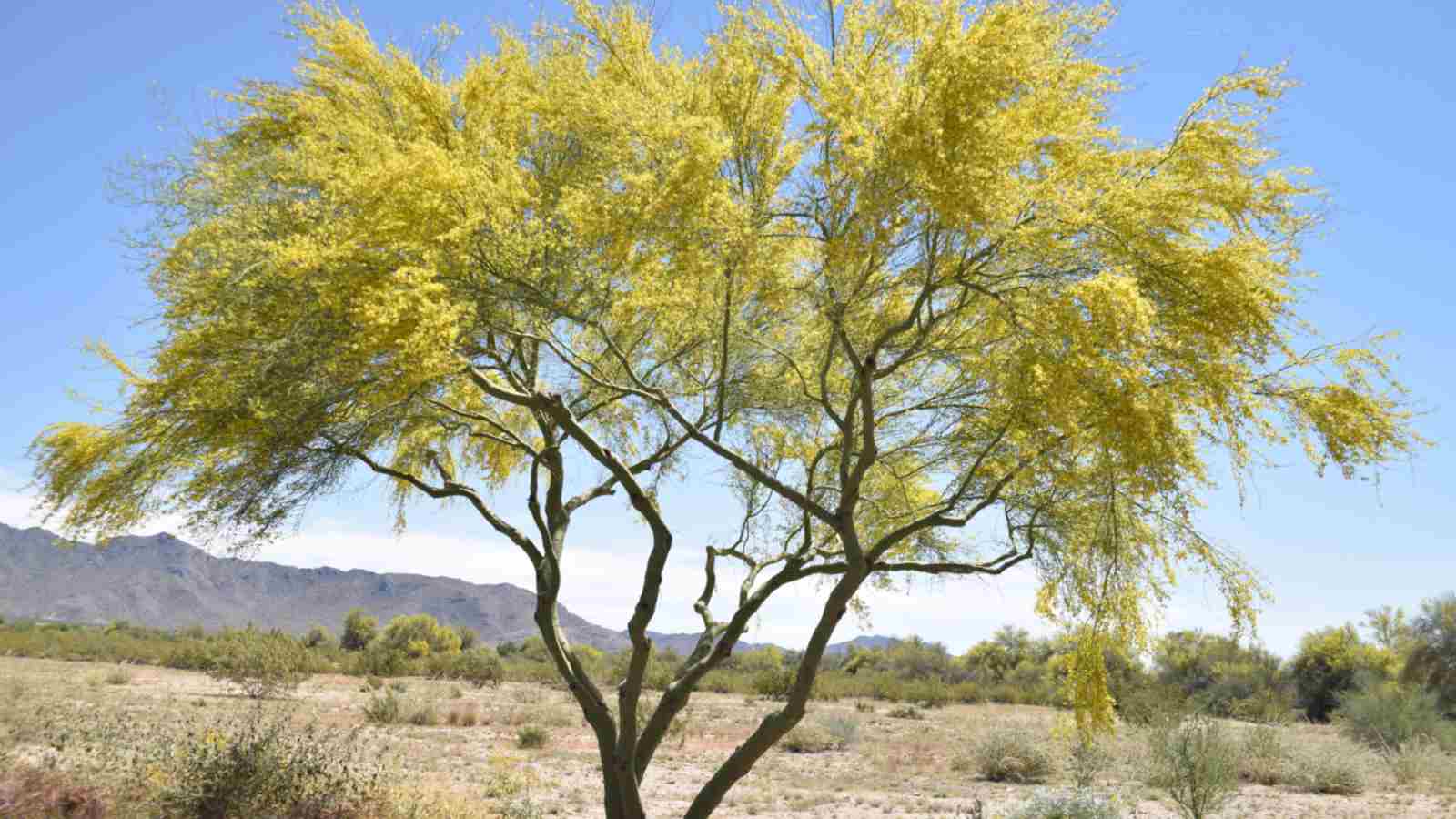Palo Verde trees, with their brilliant green bark and delicate leaves, are a popular choice for arid areas. Proper trimming is required to keep them healthy, beautiful, and safe. In this comprehensive tutorial, we’ll walk you through the best ways of how to trim Palo Verde trees so they thrive in your garden or landscape.
An Overview of the Palo Verde Tree
The Palo Verde tree, with its vivid green bark and delicate, feathery leaves, is endemic to the dry southwestern United States and Mexico. These deciduous trees, which can reach height up to 25 feet, thrive in desert settings. In the spring, they produce eye-catching yellow flowers that offer a splash of colour to arid environments. The green bark of the Palo Verde tree is distinctive because it is capable of photosynthesis, a critical adaptation for survival in hostile settings. The Blue Palo Verde (Parkinsonia florida) and the Foothill Palo Verde (Parkinsonia microphylla) are the two primary species, each with its own set of traits and growth patterns. These trees are popular in xeriscaping because of their drought resistance and low maintenance requirements. Proper care, such as occasional trimming, helps to maintain their health and aesthetic appeal.
Why Trimming Is Important
Regular pruning of Palo Verde trees is essential for a variety of reasons, including:

Health and Growth: Removing dead or damaged branches encourages healthier growth while lowering insect and disease risks.
Safety: Trimming keeps branches from becoming a hazard, especially in severe winds or storms.
Aesthetics: Proper trimming improves the tree’s natural beauty and promotes a more appealing shape.
Tools are required for trimming
Having the proper tools is critical for efficient and safe trimming. Here are the tools you’ll need:
Hand pruners are for small branches and twigs.
Lopping shears are for medium-sized branches.
Pruning Saw, for bigger branches.
A pole pruner is useful for high branches that are difficult to reach.
Safety equipment includes gloves, safety glasses, and a hard hat.
How to trim palo verde tree
Inspect the tree
Before making any cuts, properly examine the tree. Check for dead, diseased, or damaged branches. Identify branches that cross or rub against one another, as these can cause sores and contribute to disease.
Remove any dead or diseased branches
Begin by eliminating any dead or unhealthy branches. Use hand pruners for small branches, lopping shears for medium branches, and a pruning saw for bigger branches. Make clean cuts around the branch collar to encourage a healthy recovery.
Thin out the canopy
Thinning the canopy allows light and air to penetrate, resulting in better growth. Remove any overcrowded branches to decrease competition for resources. Avoid over-pruning; removing too many branches might cause stress on the tree.
Trim to shape and structure
Trim branches that distort the tree’s natural contour. Concentrate on keeping a balanced canopy with evenly spaced branches. This not only improves the tree’s beauty but also minimises wind resistance, lowering the likelihood of storm damage.
Clean up
After trimming, gather and dispose of all cut branches and trash. This helps to prevent the spread of disease and keeps your landscape clean.
Tips for Successful Trimming
Avoid overpruning: Overpruning can cause sunburn on the tree’s bark, especially in hot locations. Limit your pruning to 25% of the tree’s canopy in a single session.
Use clean equipment: To reduce the risk of infection, use clean, sharp equipment to perform accurate cuts.
Water and Mulch: Water your Palo Verde tree well after cutting it. A layer of mulch around the base can help keep moisture in and regulate the soil temperature.
Common mistakes to avoid
Trimming during the wrong season. Trimming during the hot summer months or in the fall might cause the tree to become stressed and prone to disease.

Improper Cuts: Avoid making flush cuts or leaving stubs, as these can cause poor healing and increase the risk of infection.
Neglecting Safety: Always prioritise safety by wearing proper equipment and keeping your tools in good shape.
Aftercare for Trimmed Palo Verde Trees
Post-trimming care is vital for your tree’s recuperation and healthy development. Here are some important after-care tips:
Watering
Ensure that the Palo Verde tree receives appropriate water, especially during dry months. Deep watering promotes strong roots and general health.
Mulching
Apply 2–4 inches of mulch around the tree’s base, avoiding direct contact with the trunk. Mulch helps to retain moisture, control weeds, and regulate soil temperature.
Monitoring
Regularly check your tree for symptoms of stress or disease. Early detection and management can keep small difficulties from turning into serious problems.
Benefits of Professional Trimming Services
While many amateurs can undertake simple trimming, there are considerable benefits to hiring a professional arborist:
Expertise: Professionals have the necessary knowledge and experience to trim trees properly and safely.
Proper Equipment: They have access to specialised equipment that allows them to trim more efficiently and effectively.
Health Assessment: Arborists can evaluate your tree’s general health and propose extra care or treatments as needed.
FAQS
How much trimming can I do at once?
Do not remove more than 25% of the canopy in a single session To avoid stress and shock, gradual trimming over several seasons is often preferable for the tree’s health.
Should I use wound dressing on cuts?
Wound dressings are often unnecessary for cuts since they can occasionally impede the natural healing process. Healthy trees will spontaneously heal their wounds.
Can I trim a weeping cherry tree, or should I hire a professional?
You can do minimal pruning if you have the right equipment and skills. However, to ensure the tree’s health and safety, hire a professional arborist if the tree requires considerable pruning or is enormous and difficult to reach.
How do I keep the weeping shape?
Pruning regularly will help to remove upward-growing branches and foster the downward sweep that distinguishes a weeping cherry. Its consistent shape contributes to its elegant appearance.
What Should I Do If My Weeping Cherry Tree Has a Lot of Suckers?
As soon as suckers (vigorous shoots that develop from a tree’s base or roots) appear, remove them. Suckers can siphon energy from the main tree, causing it to change shape.
Conclusion
Trimming your Palo Verde tree is a necessary task that benefits health, safety, and appearance. By following the methods given in this tutorial, you can keep your tree looking lovely and healthy. To get the best results, trim at the correct time, with the right equipment, and follow best practices.
Meta Description for Huffman Tree Services:
Discover expert tips on how to trim Palo Verde trees for optimal health and beauty. Learn when to prune, the essential tools needed, and best practices to ensure your trees thrive. Huffman Tree Services offers professional tree-care solutions to keep your landscape pristine.





